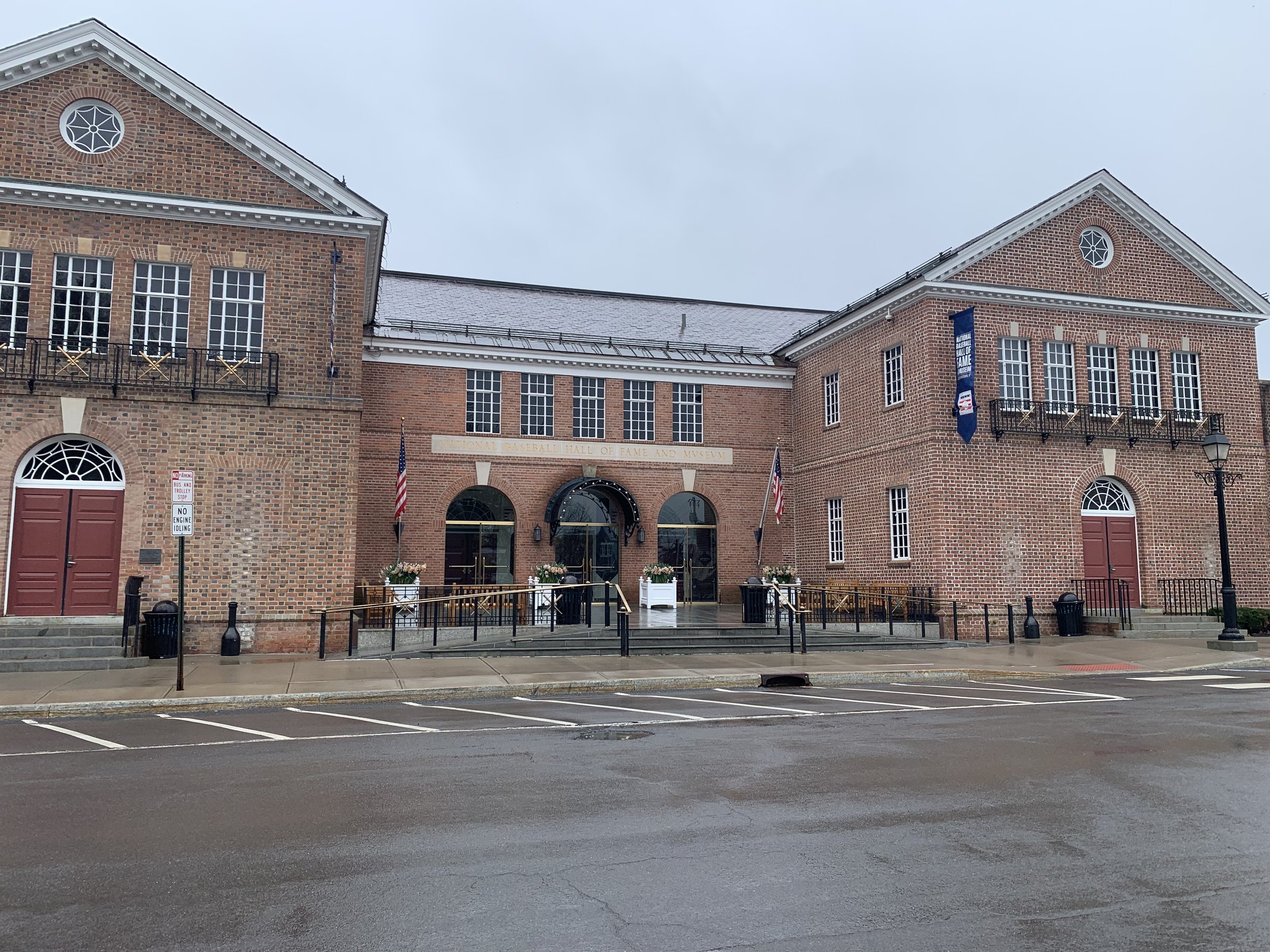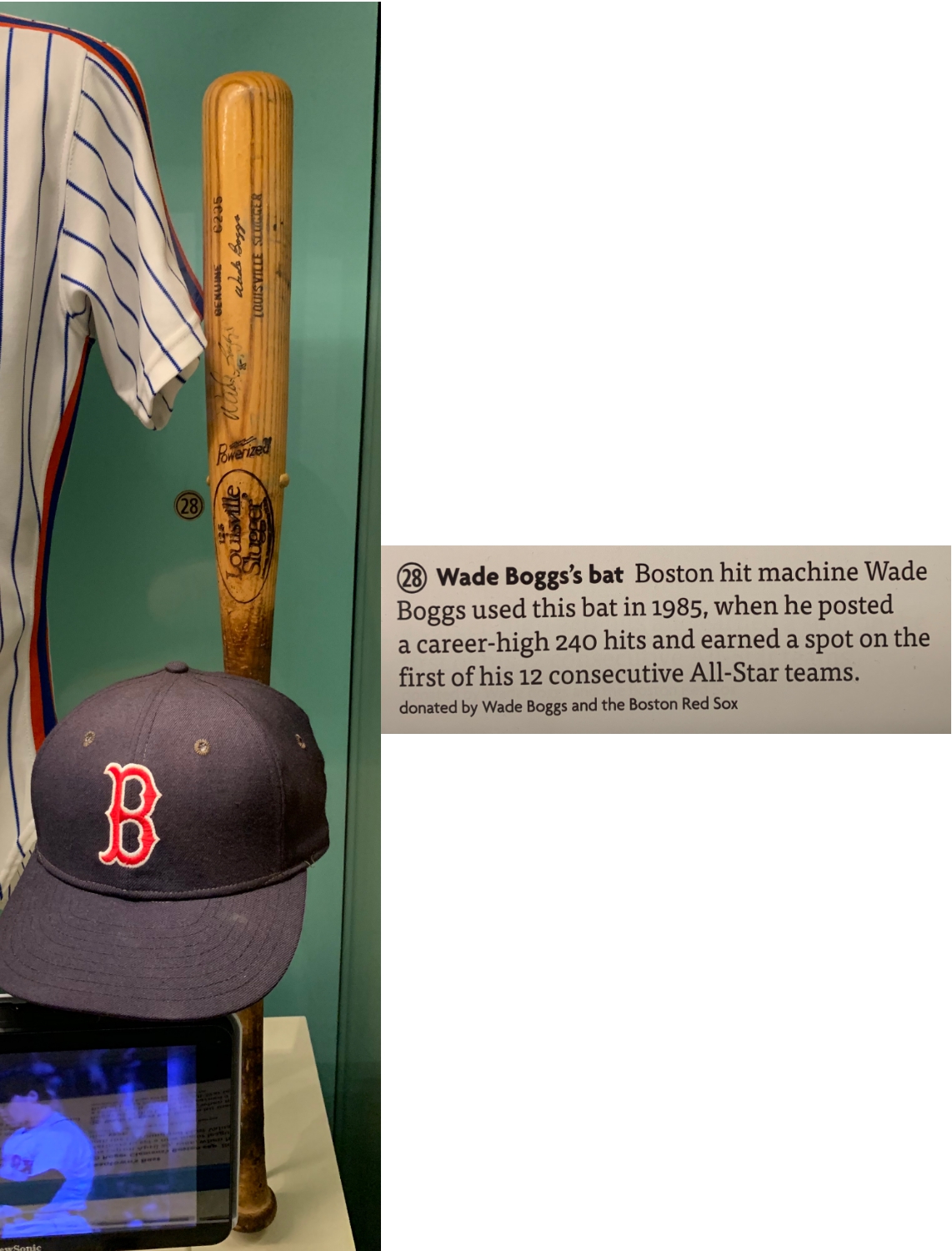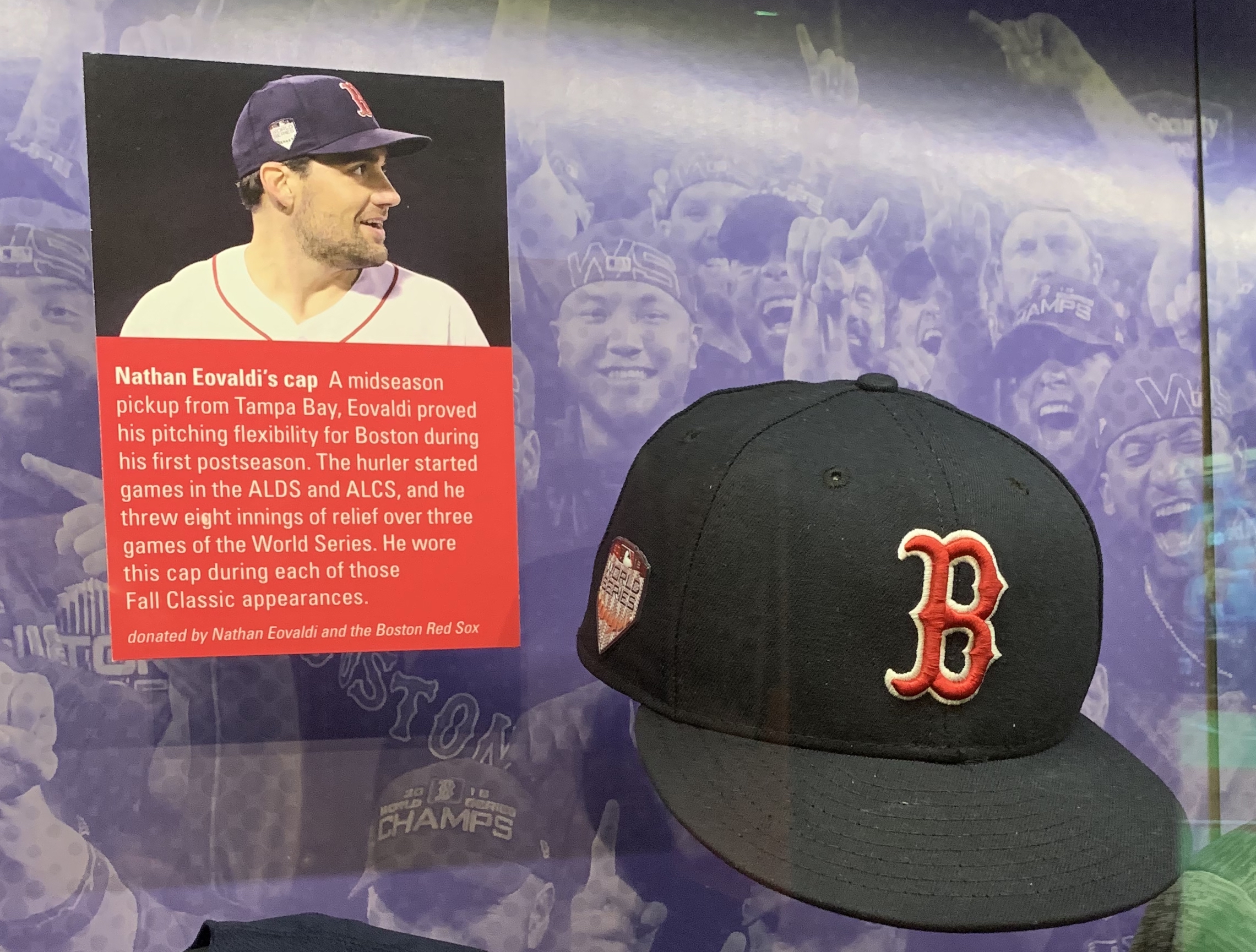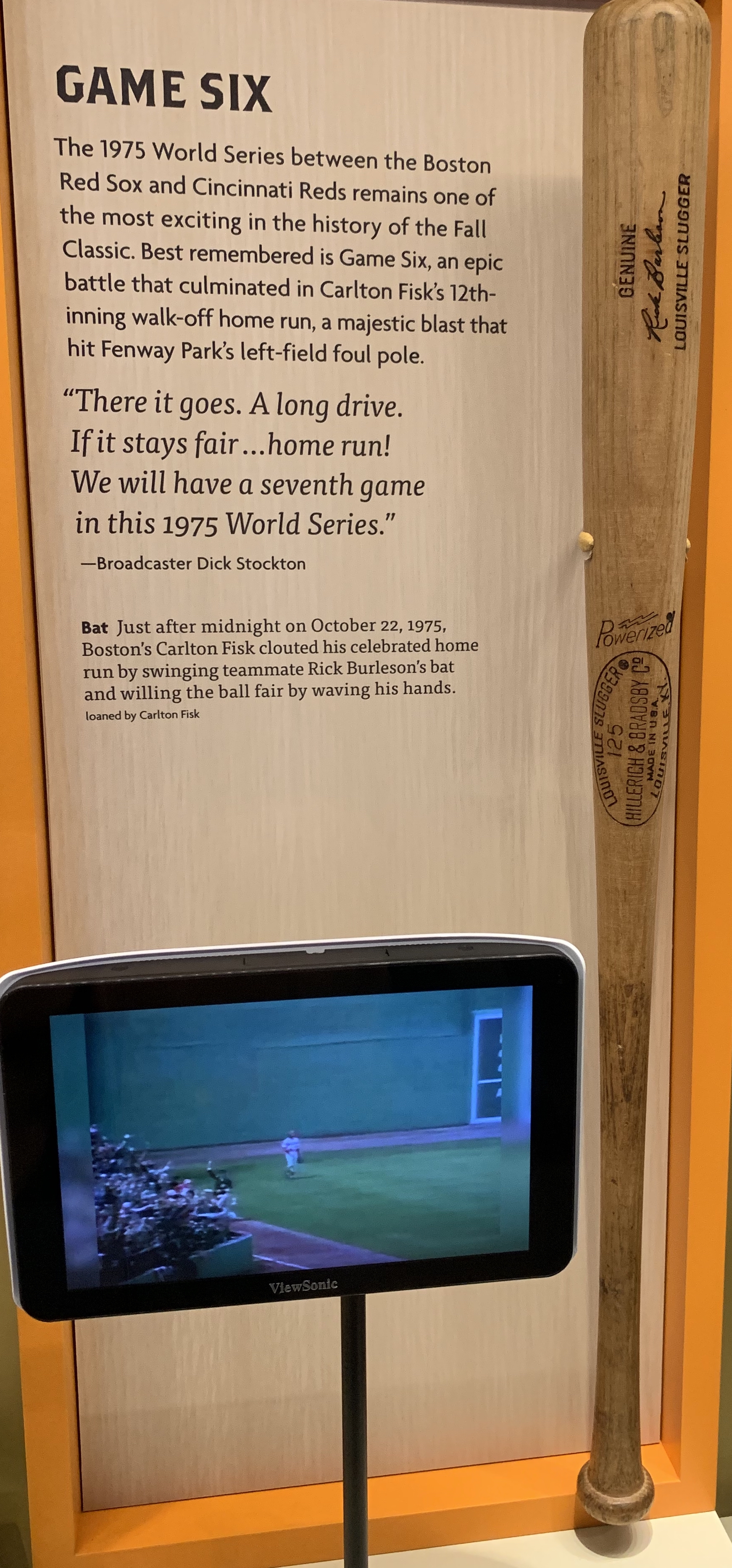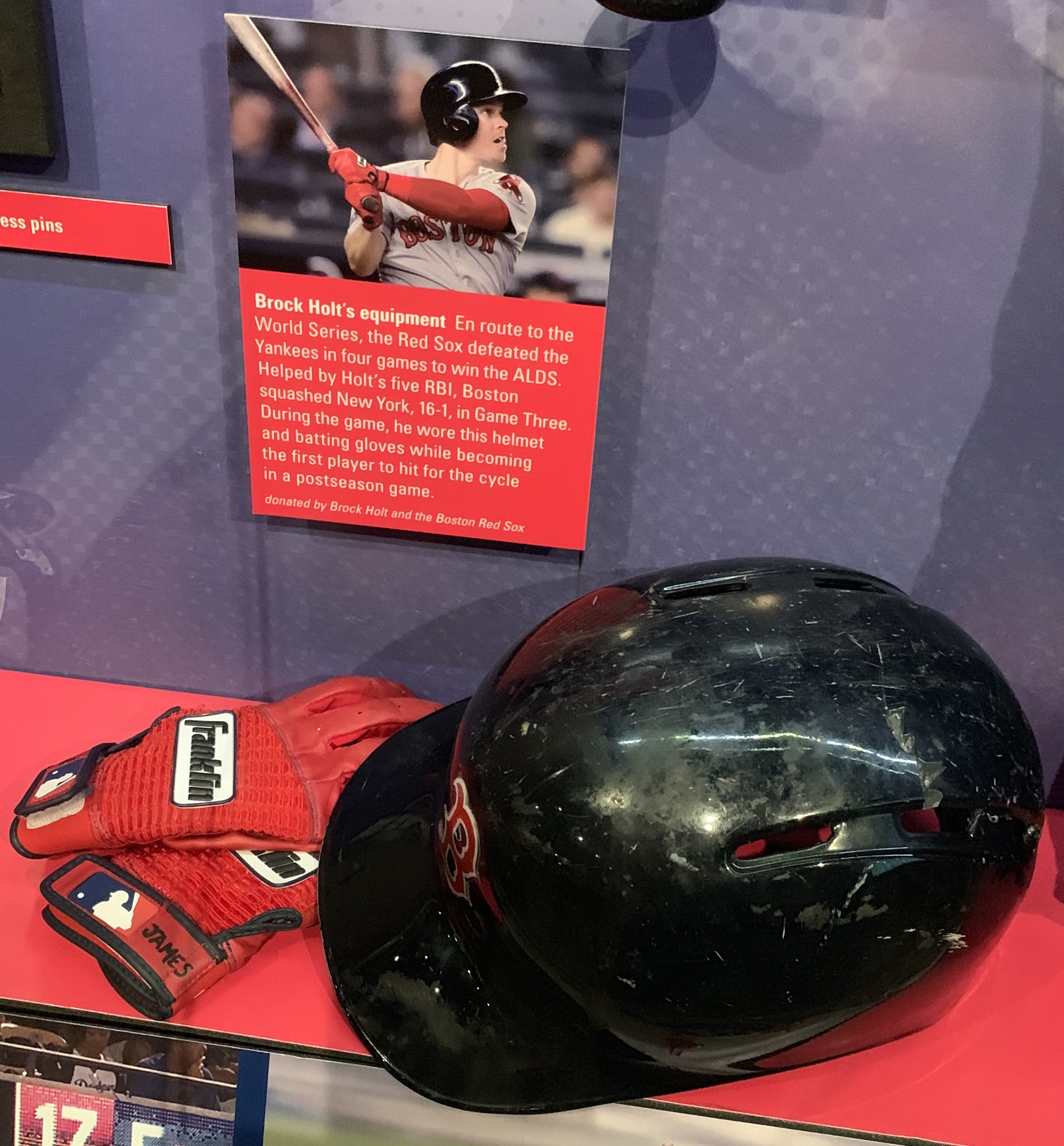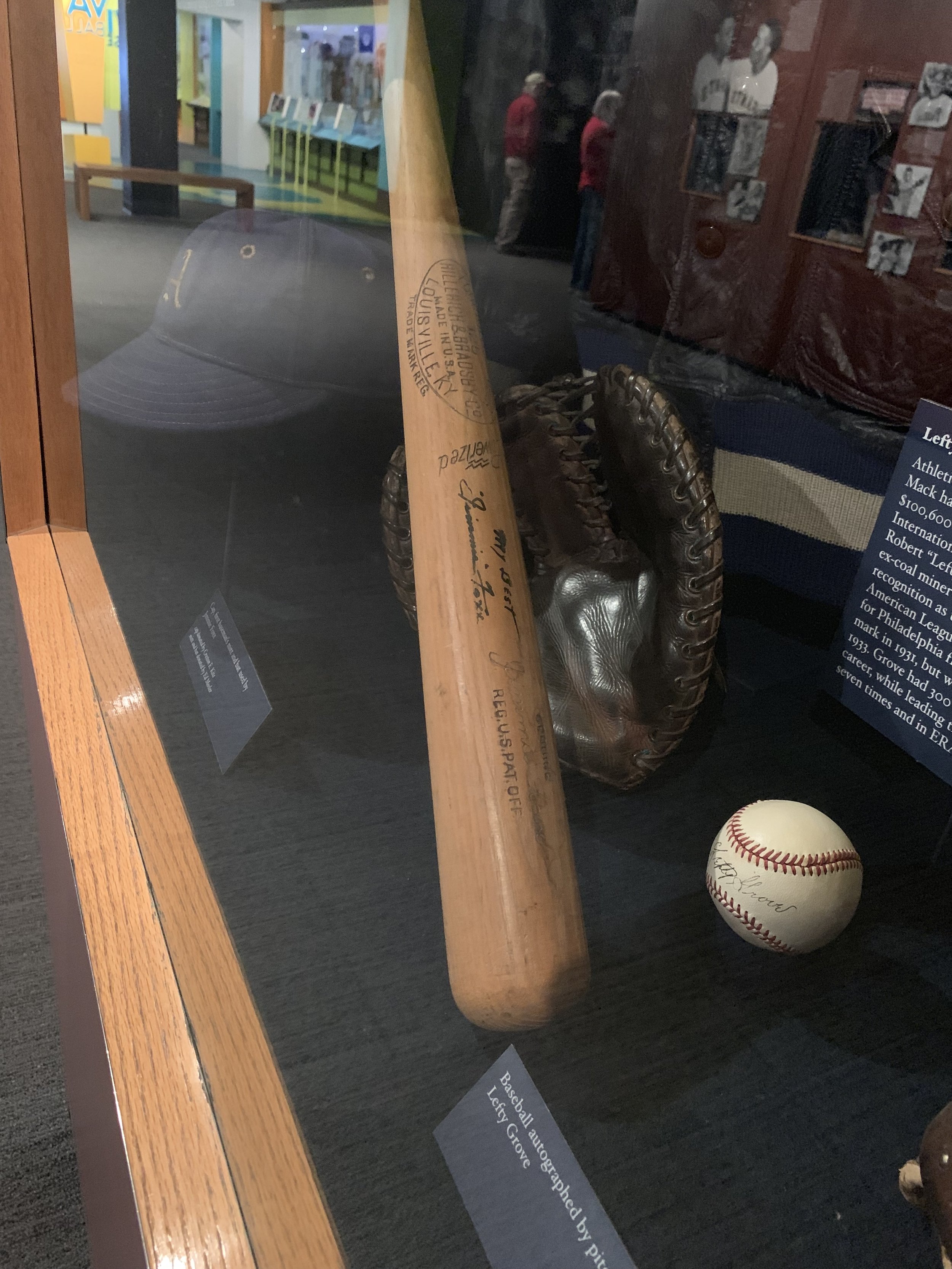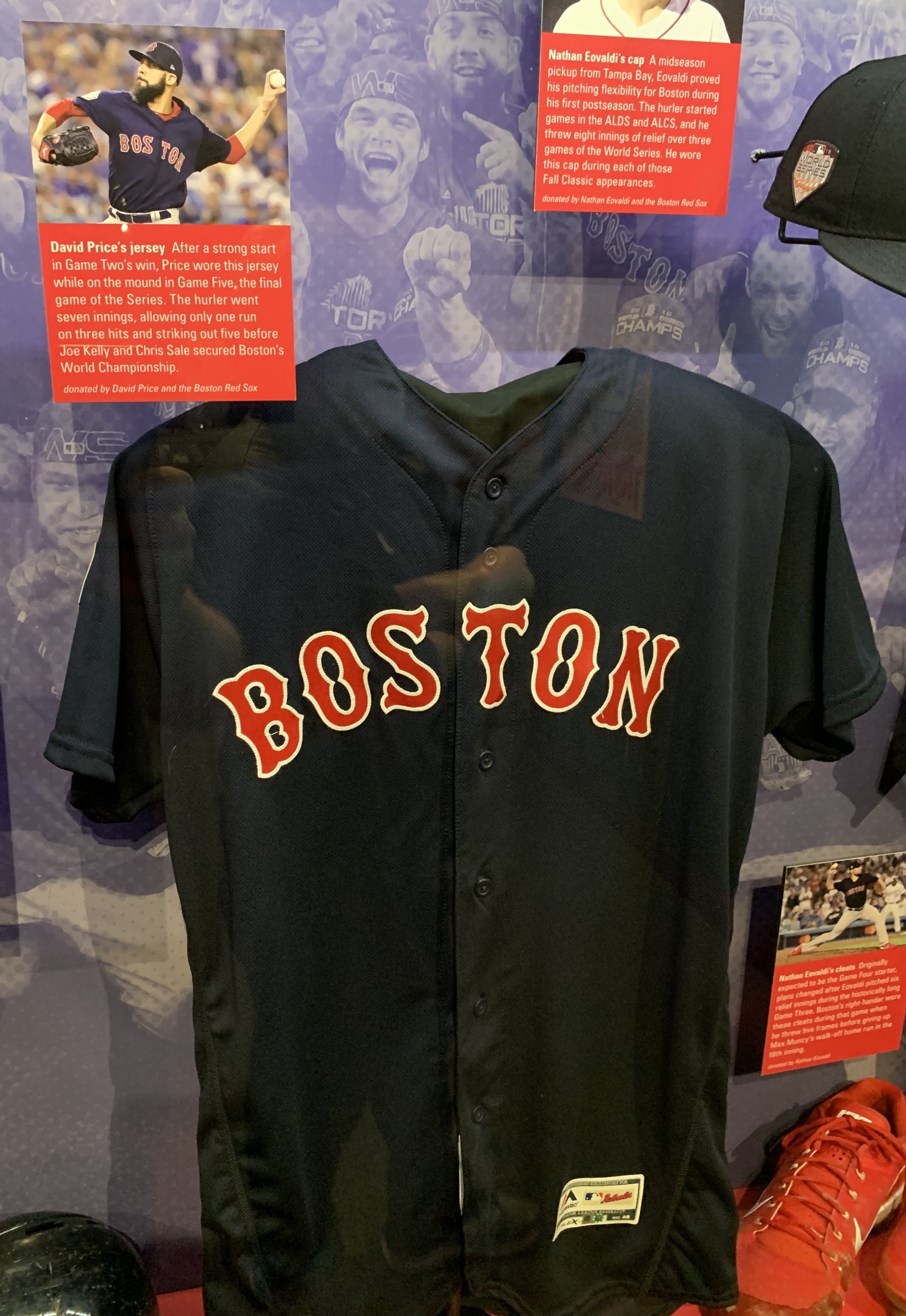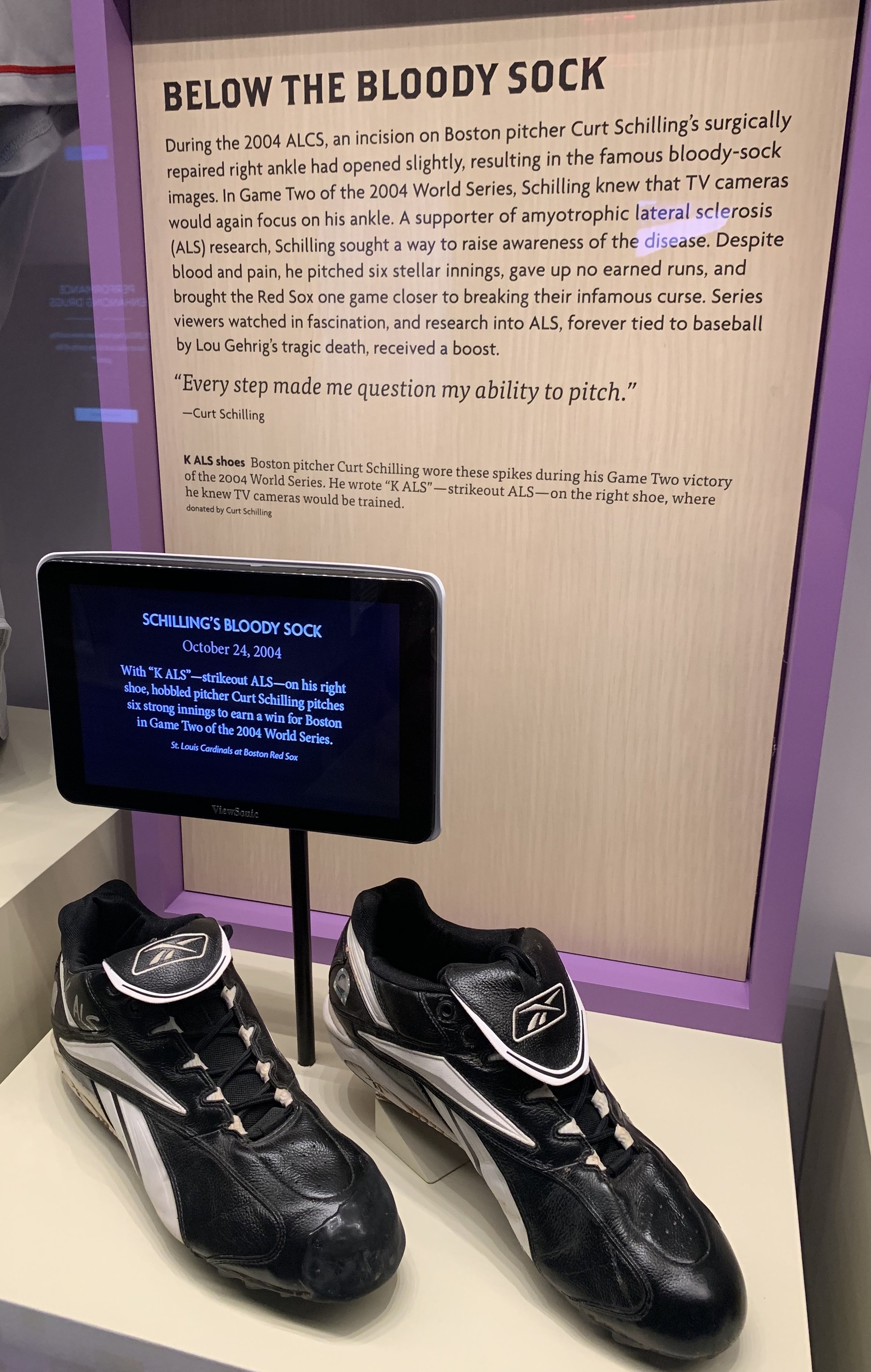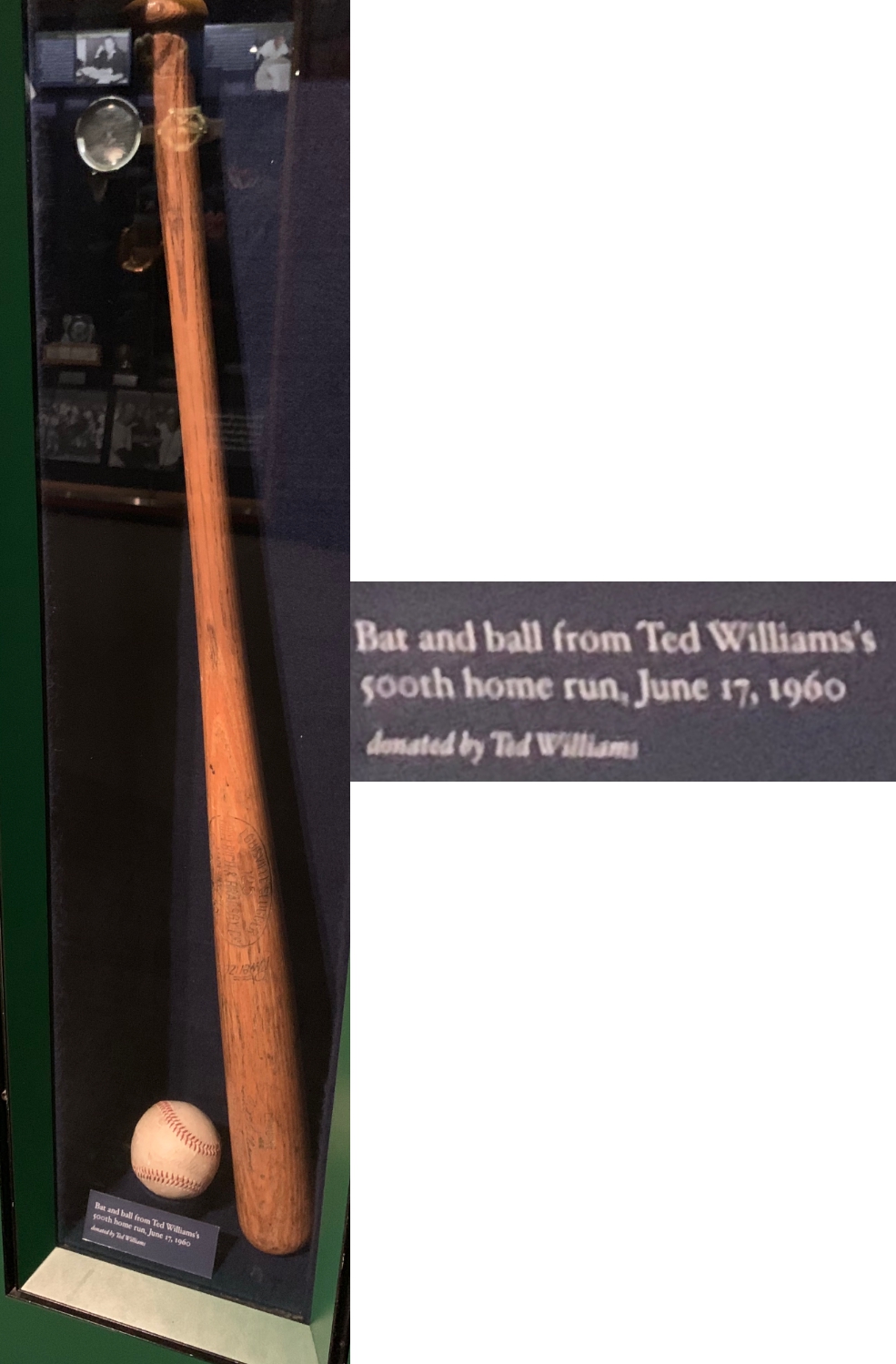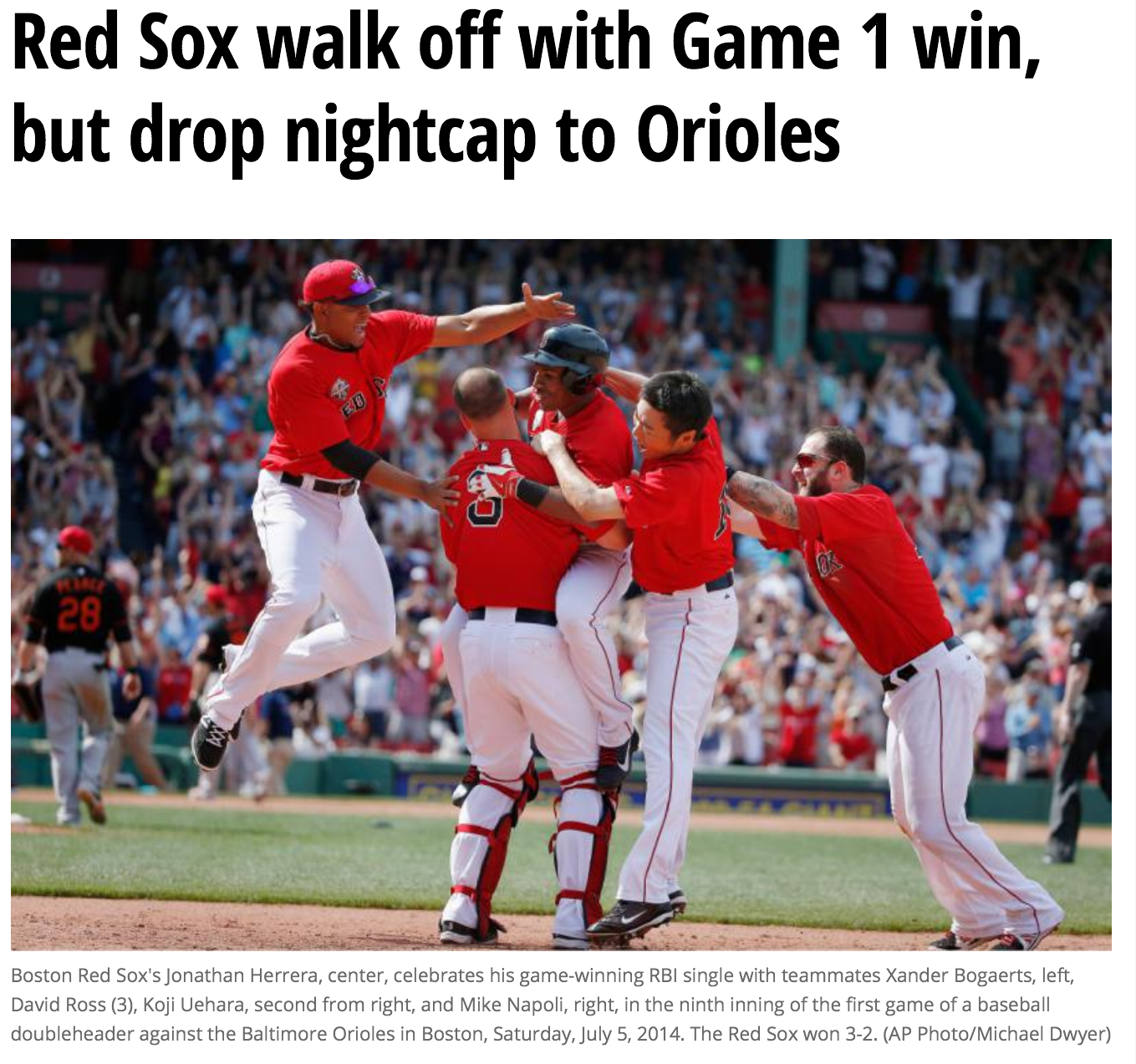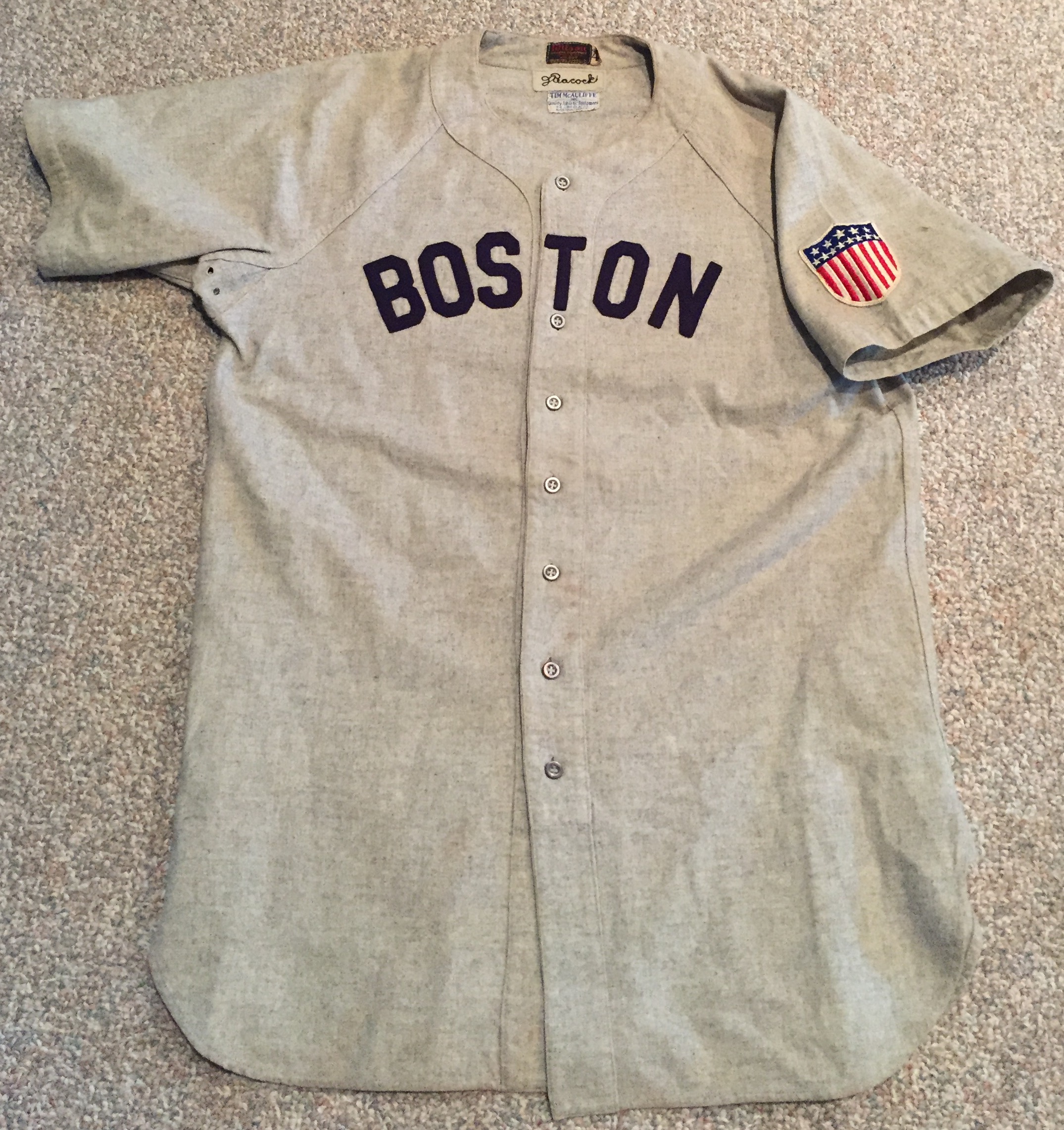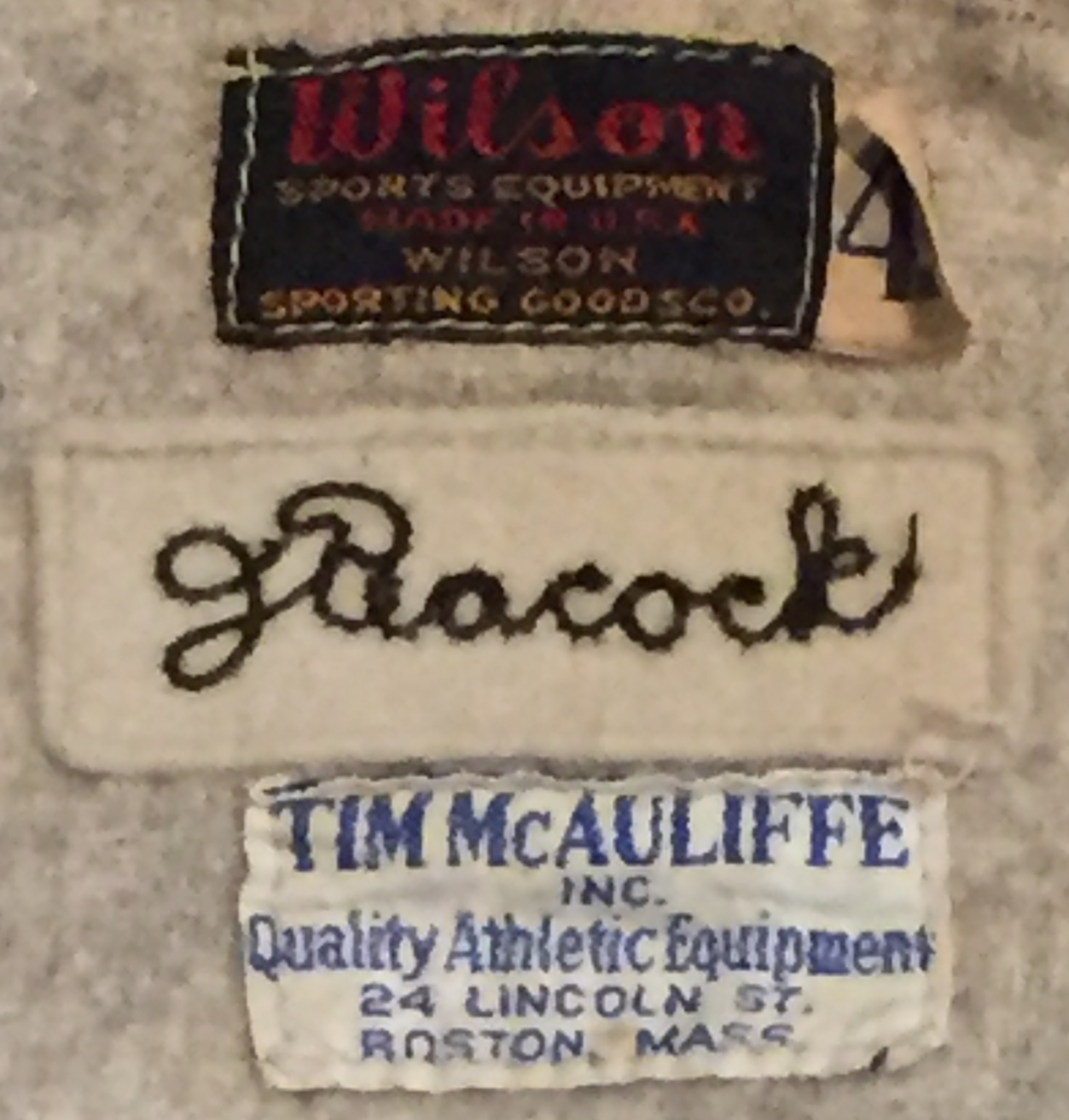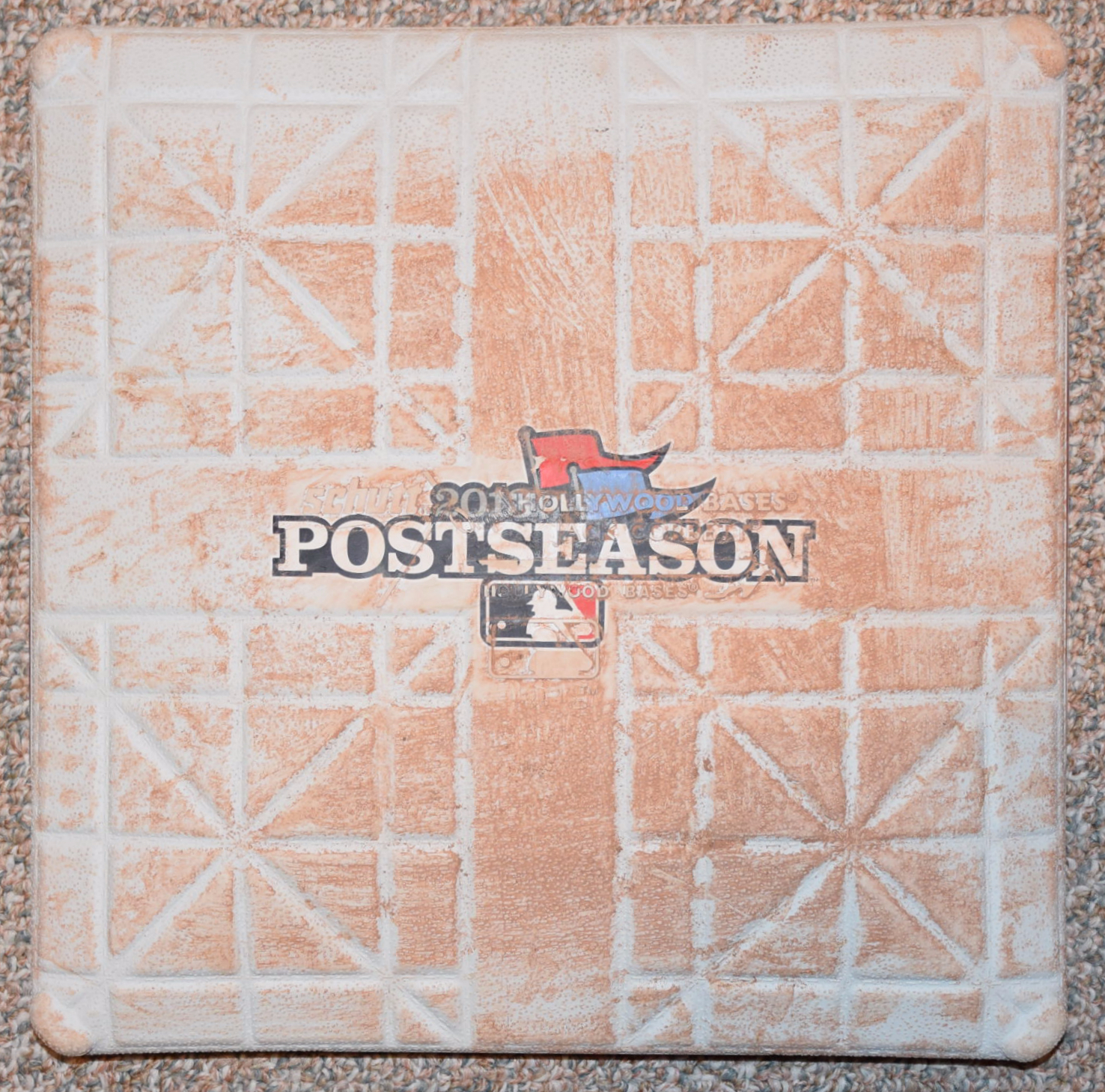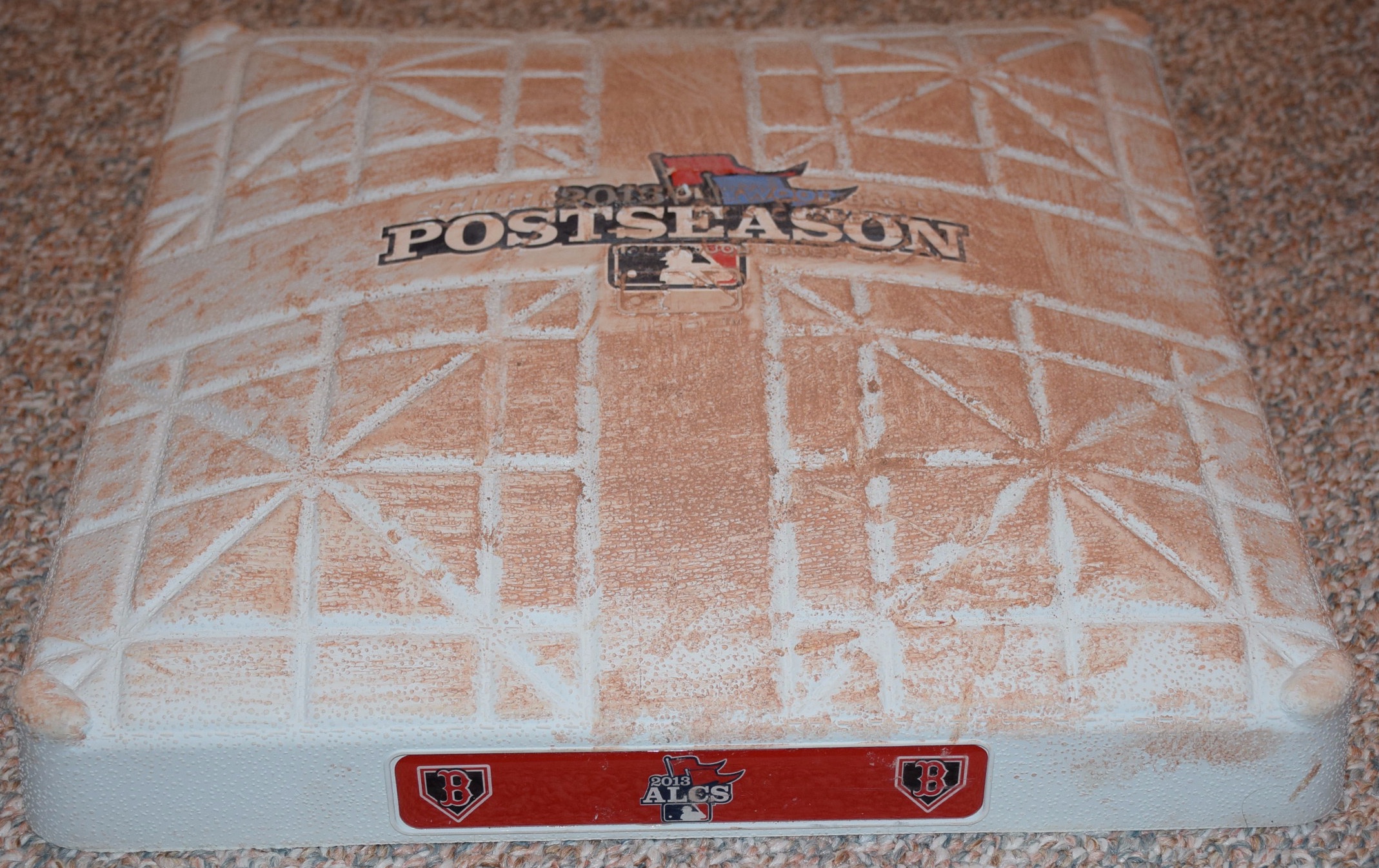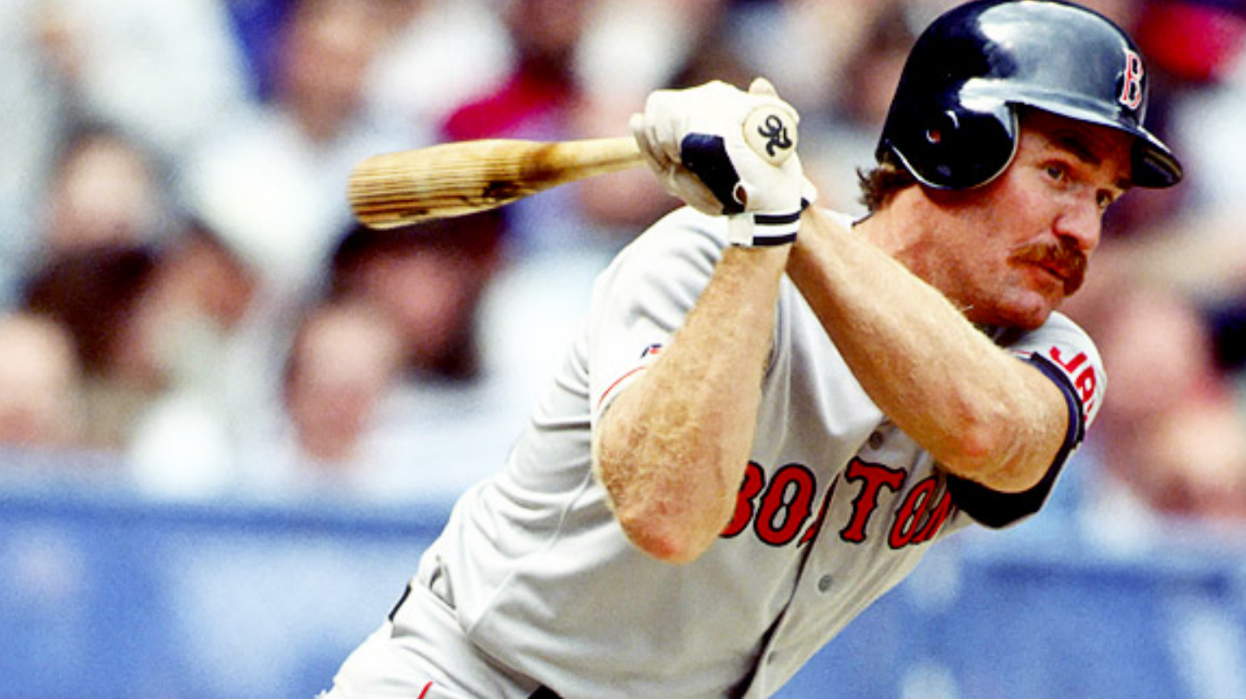Yaz, Kissinger, Cronin and the 75 World Series
Old school World Series branded bats are rare and, depending on the player, Hillerich & Bradsby record suggest that historically either 2 or 4 were made for each player. Red Sox World Series bats from 1975, given the legendary nature of the series, are particularly tough. These bats are also frequently found unused as the players get them immediately before the Series and often keep them as souvenirs.
Yastrzemski 1975 World Series Bat
We recently added this Yastrzemski 1975 World Series bat to the collection. It is unused with Yaz’s 8 on the knob. At first I was not thrilled with the multiple autographs on the bat. Not a huge fan of autographs beyond the player unless it is a team autographed bat. But then curiosity got the better of me, how and when were the signatures added to the bat? And why would someone add these signatures to an incredible bat in it’s own right?
The large and distinct signature was easily identified as that of Henry Kissinger, not an autograph typically found on a baseball bat.
The second signature is that of Joe Cronin.
Cronin the former Red Sox player, coach, and general manager was also the President of the American League. Not to mention a 1956 inductee into the Baseball Hall of Fame. But his tenure as League President ended in 1973.
But why in the world would someone collect those two signatures on a Yaz World Series bat?
AP Images provided the first clue as a beaming Yaz is photographed chatting with Kissinger before game 2 of the 75 World Series played on October 12, 1975.
Kissinger was also photographed in a pose throwing out the first ball.
But Cronin? Off to newspapers.com (which I will say as an aside is an INCREDIBLE resource for even the smallest historic tidbits) to unearth this little tidbit side note.
Some would have the signatures removed to return the bat to a pristine state, or leave only the Yastrzemski signature. Not me, this is just another great piece of history in its own right with an interesting story that in my view raises the historic value. The hobby has a way of delivering gems.
Enjoy your collecting!
The Baseball Hall of Fame - From A Red Sox Perspective
So I recently had the opportunity to visit the Baseball Hall of Fame for the first time since 2003. I might just have a different perspective, but there were many changes to the museum that I think are much to the better. Not only is there a greater emphasis on the modern game, but it is done without forgetting the past. As a result, there is something for the most avid old time baseball fan as well as plenty for fans of the current game. It would be impossible for me to go through all that I saw, all I can say is that you must go. I also highly recommend that you become a HOF Member (click here to do so) so you can get access to the HOF’s magazine which has tons of articles about the Hall’s collection.
For those of you that are Red Sox fans, buckle up. What follows are the highlights of Red Sox game used on display at the HOF, some incredible stuff.
Red Sox "Walk-Off City" - Super Rare Walk-Off Bats
The other day Rafael Devers squirted a single through a drawn in infield and the Sox had the latest installment of “Walk-Off City.” It is one of the most joyful moments in baseball, your teammates tear out of the dugout to chase you and, of course, you are at home and the crowd goes wild. A Gatorade shower is most definitely in your future.
Many players will say that they had never done it at any level, including little league. We have not researched the scarcity of a walk-off but it must be rare. . . .right?
Here are three Red Sox bats that drove in that final game ending run.
Herrera Walks It Off On The 5th Of July 7/5/14
2. Xander Does It In Grand Style 7/14/18
3. Cody Ross Caps a Home Run Binge 7/20/12
Sale to Leon Makes Red Sox Strikeout History - 9/20/17
On September 20, 2017, Chris Sale took the mound in the 8th inning and when he fired the final pitch of that inning he notched his 13th strikeout of the game and 300th of the season. Ryan Flaherty was the victim and Sale became the first AL pitcher in 18 years to record 300 strikeouts in a season.
CBS Boston reported: “It was fun. I’m appreciative of that,” Sale said after winning his 17th, regarding his teammates giving him a standing ovation in the dugout after his 300th strikeout. “We go through the trenches together and put in a lot of hard work. They don’t call these the dog days for nothing. Having them have my back and being able to share that moment with them was special. I’m very appreciative of it.”
The last AL pitcher to K 300 batters in a season was Pedro Martinez in 1999, when he set the Red Sox record with 313. He joined some pretty high flying company. Sale became the 14th pitcher in the “Live Ball Era” (1920-present) to total 300 strikeouts in a season. Further he became just the fourth American League pitcher since the designated hitter was adopted in 1973 to record 300 strikeouts in a season, joining Pedro Martinez (1999), Randy Johnson (1993), and Nolan Ryan (1973, 1974, 1976, 1977, 1989). Roger Clemens ranks third all time in strikeouts, but in his 24-year career threw 300 strikeouts in a season.
The above pictured glove was used by Sandy Leon to catch that strikeout and is autographed by Sale and Leon. In 2017 Leon would catch Sale in 32 of the 33 starts by Sale in the regular season and playoffs. Click here for More Sandy Leon Gear.
Leon on September 20, 2017
Boston Game Used at the Library of Congress
On March 23rd, BostonGameUsed.com took its show on the road, so to speak, to Washington D.C. and the Library of Congress. We had the privilege of bringing twenty game used bats from our collection and other memorabelia to the LOC as part of a program entitled “Collecting Red Sox History.” We had the opportunity to explain the origins of our bat collection. Sarah Coffin, the Boston Red Sox Curator, also presented and we disused, among other things, the role of collectors in preserving and displaying historic memorabilia. The event was held in the historic Jefferson Building which also currently is hosting the LOC’s Baseball Americana Exhibit and was well attended by Red Sox Nation.
Hitting For The Specialty Catcher’s Gear Cycle - Sandy Leon, Red Sox Game Used
The Catcher’s Gear Cycle
For catcher’s gear collectors, we are in a golden age. Those of us who closely watch the position have seen an explosion of specialty catcher’s gear sets and a certain amount of innovation. I can’t say 100% for certain, but I think the specialty gear trend began with the manufacturer All Star in the early 2000s, see the prior blog post on Jason Varitek. Now many different manufacturers produce the specialty gear and certain catchers will wear specialty gear for Mother’s Day, Father’s Day, Memorial Day and the 4th of July.
Shin Guard Detail
Chest Protector Detail
Batting Glove Detail
This gear is highly sought after, frequently auctioned for charity and generally very difficult to collect. For several years we have been trying to collect a catchers gear cycle, a set from each holiday, and that goal has finally been reached. The details on the gear are what makes it so fun. For example, the Nike Memorial Day gear carries through a patriotic ribbon from the shinguards to the chest protector to the batting gloves. As time has gone on, manufacturers have coordinated cleats, arm sleeves, batting gloves and other items. Further, the advent of Stance socks have been a great addition. More gear to see in the Catchers Collection
Johnny Peacock 1943 Flannel Uniform, Holding History
Johnny Peacock 1943 Road Red Sox Jersey
In 25 years of pouring over auction catalogs looking for Red Sox game used bats and catchers gear and traveling to Cooperstown, I have seen some awe inspiring flannel uniforms. Ruth, Williams, Gehrig, Mays, and Aaron among many other Hall of Famers. The whole idea of collecting flannel uniforms just seemed a bit intimidating and better left for those with an intricate knowledge of the dark secrets surrounding manufacturers’ tagging, uniform number changes, appropriate chain stitching and correct uniform styles. While there are a few flannel experts that are particularly helpful, Dave Grob for example, it seems that the majority of these flannel uniforms are locked down in mysterious collections of deep pocketed collectors where they rarely see the light of day. (OK this is a bit of hyperbole but we are talking about FLANNELS here!) Yes, I also did not understand the enthusiasm expressed by many who collect flannel jerseys, I was a doubter.
When I look at a piece that is outside the traditional four corners of my collection I am always asking myself, how will it fit in the collection? Is it historic? Does it stir the imagination? In other words is there a wow factor? Is it something that could be placed on loan? And, most importantly, are limited collecting resources well spent on the item? Flannel jerseys had never really checked the boxes.
I did have one or two but those were unique situations where the price was reasonable or the jersey came with another item. It was not until recently that I was offered something special, a Johnny Peacock 1943 Red Sox road flannel uniform. Peacock was a catcher for the Red Sox from 1937 to 1944. He played with Williams and caught Lefty Grove’s 300th win in 1941.
Once I got it in my hands, I understood the attraction of flannels. The tagging was intricate and elaborate, complete with chain stitching. The fabric heavy and worn, particularly the pants that were permanently stained reflecting hours spent kneeling in the dirt. Simply put, I felt like I was holding history. I might be tough pursuing a collection of flannels due to scarcity and expense, but if you find one that fits your collection, take the leap.
Johnny Peacock Game Used Road Red Sox Pants
Collecting Game Used Bases: An Ortiz 2013 Playoff Grand Slam
Even though they have been collected by the grounds crew and hologrammed for years, I am a relative newcomer to collecting game used bases. That does not mean that I was unaware of bases, it was more of a “what can I really do with this” attitude. They are difficult to frame or display. Even if you want to lay a few out, that can be awkward. Many collectors have one or two but the collecting “completists” among us have a tough time finding satisfaction in that pursuit. Further, they can be pricey, even when it comes to the more common bases, and World Series pricing can be staggering. So I pretty much stayed away.
However, when I had the opportunity to pick up a fairly historic base in 2013, I jumped at the chance, and added to the collection 3rdbase from innings 7-9 of ALCS game 2 Boston v. Detroit. It was the bottom of the 8thand the Red Sox were down 5-1 and about to go down 2-0 in the series. Ortiz was 0-for-6 with four strikeouts in the series at that point, but the Red Sox had the bases loaded with two outs. The Tigers, taking no chances, brought in their closer, Joaquin Benoit, who had never allowed Ortiz an extra base hit in 27 career plate appearances. Ortiz swung at a first pitch changup and drove it over the right field wall, tying the game, immortalizing bullpen cop Officer Steve Horgan and burnishing his already stellar Hall Of Fame credentials.
Above is the third base that David Ortiz touched as he headed home having just hit the grand slam. It was also from this base that Jonny Gomes scored the eventual winning run in the bottom of the 9thwhen Jarrod Saltalamaccia walked it off with a single. I have found that this base resonates with fans and collectors. Rather than a white elephant, it fits with the game used balls, uniforms and bats in a collection from the 2013 playoff run. Player, team and ballpark collectors could find similar satisfaction when adding a few bases to their collection.
Knob Numbering - A Cautionary Tale Focusing On Boggs Game Used Bats
We have been collecting for over 25 years, have handled more than a thousand Red Sox bats, and looked at probably hundreds of more in auctions and online. At the time we started, there was no such thing as photo matching or video matching and of course no MLB authentication.
The hobby has lurched into the present and now you can screen shot from MLB HD and scour Getty images to photo match bats. But we also very much enjoy the more traditional discussions of authentication that revolve around player use characteristics, trying to determine whether a bat is authentic by studying how a player prepared his bats.
Recently, we have encountered discussions that suggest a "players handwriting" is reflected by the numbers on the knobs, and some limited suggestion that bats without knob numbers written a certain way were "fake" or "fraudulent." Player characteristics are a vital part of authentication, especially for the very valuable high end bat. One might not buy a bat that does not have the typical player characteristics, but this does not necessarily mean the bat is fake or fraudulent. Further, the modern bat faker is likely bright enough to research player characteristics, (yes this actually happens, but that is a story for a different day).
Why choose Boggs for this discussion? Well he is one of our favorite Red Sox players, his game used bats have always been in high demand and we have seen extensive discussion by collectors and authenticators in the hobby about his habits and the way that numbers were written on the knobs of his bats. A review of Getty Images is replete with pictures that show his typical Red Sox knob numbering like the below:
This has led some people to conclude that Boggs sat in his locker and wrote the knob numbers his bats. Such conversations often turn to discussions of "Boggs' handwriting." We concede that we have no special insight into what he actually did while a Red Sox, we were not in the locker room, and he could have been the one who wrote all the knob numbers. He certainly had that level of attention to detail when it came to hitting. However, that is unlikely, at least not in every instance. As evidence we offer a group of numbers written on the knobs of several Red Sox bats, tell me which ones are Boggs written 2s.
Answer is None, as you probably guessed, but they look quite close to the purported Boggs handwriting and we could give you dozens more examples.
A review of Boggs online images also reveals tons of images with the more common Boggs numbering, but also several instances of knob numbers that are not the typical numbering style. And these are pictures from approximately 100 at bats of the thousands of at bats he had.
Even PSA has apparently concluded that the knob numbering is not the be all and end all of a Boggs gamer, repeatedly giving Boggs bats with varied knob numbers some of the highest possible grades.
Even bats that have one style of numbering on the knob, have been found to have a different style of numbering on the top of the barrel.
A recent dealer acquisition of Boggs bats sealed this for us, or unsealed it as the case may be. It was a set of early 90s Boggs Red Sox bats, autographed as "game used" by Boggs. However, the knobs reflect no less than three different numbering styles
The reality is that bats come into the clubhouse and are shipped and handled in many ways. Could they have been shipped with other bats for spring training and numbered before Boggs got to Fenway or Winter Haven? Possibly. Could they have been mixed and brought on the road necessitating clubhouse staff to number up the knobs? There is a chance. So what is the point here? Bat authentication by player characteristic (particularly the absence of a player characteristic) is an art and not a science. To be clear, there are many game used bats we have passed on because they lacked player characteristics, and if shopping for a Boggs, the more common number would be part of an analysis of fair value, but be cautious before a calling out a bat as fake or fraudulent for lacking those characteristics. Good luck with your collecting!
Santiago Takes Gibson Deep - 50 Years Ago Today
50 years ago today the Red Sox opened the 1967 World Series at Fenway Park against the Cardinals in furtherance of their Impossible Dream season. Jim Lonborg, on the mound for the dramatic pennant clinching final game of the season, was not available. So Manager Dick Williams turned to the 27 year old Jose Santiago from Puerto Rico. A below .500 pitcher the year before, Santiago brought a 12-4 record to game one and was a hero in his own right, having won the second to last game of the season which enabled Lonborg's heroics. He was slated to face future Hall of Famer Bob Gibson, 13-7 on the season with a 2.98 ERA and 10 home runs allowed. Gibson got the better of the Sox in game one and he would go on to dominate the 1967 World Series, winning 3 games with a 1.00 ERA.
However, Santiago would expose a chink, albeit very small, in Gibson's armour on this day. Trailing 1-0 in the bottom of the third inning he strode to the plate carrying a Don Demeter model bat, sporting a fair amount of pine tar. (Demeter had been traded away earlier in the year). And for the second and last time in his career he slammed a home run, in what would account for the Sox' only score of the game, a tough 2-1 loss. Pictured above is the bat that he used to hit that home run and carve out his part of the incredible story that is the 1967 Impossible Dream Team.
Gary Allenson Game Used Jersey - Catcher's Wear
Just added a game used Gary Allenson jersey to the catchers gear collection (check the Allenson page for more) and it provides a super example of what a game used jersey used to look like before the advent of MLB authentication and the more frequent collection and sale of jerseys. Now I am not knocking the availability of modern jerseys, the ability of collectors to get access to jerseys has grown the hobby and brought to the public some fantastic gear. But it is great to see some of these old classics.
And a jersey used by a Catcher is unique due to the nature of the game use. Unlike any other field player, because the catcher wears a chest protector you will often seen very heavy use patterns where the chest protector would rub against the fabric or the stitched on numbers. Further, because players during this period typically had two jerseys (no road and home alternates, Fourth of July specials or St. Patrick's Day jerseys) the wear is only that much more pronounced.
This Allenson jersey has all the classic characteristics of a catcher's jersey. Frayed piping and numbers on the back so worn that there are strings falling out all over. A super addition to the collection.
Collecting Non-HOF Game Used Bats
For those of you who collect baseball memorabilia, or the more specific pursuit of game used memorabilia, you have probably, like me, dreamed of holding a hall of fame piece. You read about some of the well known collections out there and marvel at Mantles, Ruths and Gehrigs that light up auctions with bids in the hundreds of thousands. Pretty easy to fall into a bit of game used envy and feel that your collection is a bit inadequate. But . . . not . . . so . . . fast!
I write here to promote the virtues of bat collecting beyond HOFers and All Stars. Stop here if you collection is an investment purely for monetary return or if you are looking for the "Shock and Awe" reaction from your friends. No need to read further. The bats I am talking about almost never hold full value and, except in very limited circumstances, will never appreciate like those from the kings of the diamond. What I am pitching is affordability and thrill of the hunt. The majority of the Boston Game Used collection has been gathered for less that what one well heeled collector payed for a single hall of fame bat. Find a niche that appeals to you and go to work building your collection.
For example, focusing on one team from one year (like a World Series year) gives you structure and will necessarily include very affordable bats that you can try to find. Obviously you can't pick the 27 Yankees and do this, but the 1990 Reds or the 2014 Tigers is certainly doable. Collecting bats used by players from your home town, country or alma mater are other areas of potential focus. I have even seen collections of bats that have a certain type of knob and collections of players with the same last name. Finding the really obscure bat can be a thrill in its own right and in many ways even more difficult than locating the bat of a HOFer. These bats are affordable and not nearly as highly sought after as other. Further, when you find a signature model, you can be pretty sure that the bat was ordered by the player as there is not much of a market for falsified obscure gamers.
Once you start to build you can continue to refine. When we started the Boston Game used collection, our sights we set high. We looked for bats only from the correct years bearing the correct uniform numbers (if any) on the knob. And as a result we missed many bats we needed due to such exactness. With age came (some) wisdom and the understanding that obscure player bats are sometimes so rare that you may never see another again. As we snatched up the first best exemplar we could find and this grew into another are of collecting, the upgrade. Even after you have an example you can still look for a better version and collect all over again.
While hall of fame bat collecting certainly is thrilling and often awe inspiring, you can get the same thrill from building any collection you set you sights on that is within your budget.
Red Sox Game Used Bats for "R" Players Added To Bostongameused.com
Manny Ramirez game used bat
We have added a picture of a bat used by every position player who played for the Red Sox from 1960 to the present who's last name begins with the letter "R" in the BAT COLLECTION section. This is part of our ongoing effort to post pictures of the bat collection for others to use as a resource or to simply enjoy for the memories they evoke. Some of the classics in this group include a stunning Manny Ramirez complete with pine tar and grass clippings stuck to it and a pounded Jim Rice bat from the 80s. Also you will find RemDawg and such unforgettables as Billy Jo Robidoux. Enjoy!
Jerry Remy Louisville Slugger 80-83 Time Period
Billy Joe Robidoux Game Used Bat
July 4, 2008 TEK and ALL-STAR Make An Epic Patriotic Statement
As you look out over baseball diamonds this Fourth of July you will see stars and stripes adorning uniforms, hats, socks, shoes, batting gloves, and most prominently catchers gear. This inevitably leads us back to an iconic set of catchers gear that we like to think launched a thousand themed jerseys. In 2008 Major League Baseball decided to weave an American flag into into the logos on hats worn on the 4th of July. The purpose was to show support for the Welcome Back Veterans Foundation, an organization devoted to veterans returning from Iraq and Afghanistan. According to the ALL-Star website, discussions began the prior fall with Tek about the possibility of themed catchers gear and during the season Tek had already worn specialty gear for Mother's Day (pink), Memorial Day (camouflage) and Father's Day (blue), but All-Star came through with an epic set for the Fourth.
Tek took the field against the Yankees that day wearing a red white and blue set of gear that led the television announcers for the game to call him Captain America. Someday we will find out the back story on what led to the creation of the gear, but we know that Tek donated the gear to MLB Auctions after the game to be sold for charity. An unconfirmed rumor has Jeter asking Tek during one at bat if Evel Knievel knew that Tek had stolen his clothes. Oh . . . and the Red Sox won the game 6-4.
The reception for this type of themed gear led MLB to broaden the program to include many themed jerseys, and you can see many in the CATCHERS section of bostongameused.com. Also, if you are looking for a set of the red white and blue for your little leaguer, go to the ALL-Star site and order one, he will be the envy of the league!
Ryan Hanigan 2015 4th of July Jersey
Game Used Bat Authentication in the Non-MLB Authenticated World
Manny Ramirez game used bat with handle tape and heavy pine tar, cracked
For those of you who have collected game used bats in the MLB Authentication era, say the last 10 years, the idea of focusing on things other than that shiny silver sticker may seem like an unnecessary effort. You wait for the authenticated bat to pop up and know with certainty when, where and who used the bat. Then you might surf on to Getty Images or MLBTV and find a picture or screen shot of the bat in use and you are done, certain that you have your favorite player's bat. Simple.
Then you decide you want to collect the 81 Yankees, uh oh. No authentication, did not exist. Likely no photomatch, there just weren't that many pictures taken and the resolution (at least online) is not sufficient. So how do you get comfortable with your purchases? First, forget about having the same absolute certainty you do today and welcome to what bat collecting was before the last 5 years. Second, get ready to play detective.
We are starting with the assumption that the player's name is on the barrel. 99.999% of all players use bats with their name on the barrel. If someone is offering you a bat with a generic label on the barrel such as "PRO STOCK" or another player's name, proceed at your own risk and beware. Pro players have bats specially made for there specifications. Players absolutely do use other players bats, but those are tough to authenticate.
While in no way exhaustive, here are a few tips that will help you in the effort:
KNOW YOUR LABELING: every few years bat companies change their bat labeling with new logos. Once you know when a certain labeling was used, then you can figure out if your bat was manufactured during the time period you are looking for. Your next question is probably: "how in the world can I do find the time to do that and keep my job?" Answer: bat collectors are forever indebted to Collector Vince Malta for doing this for us. Vince is the primary author of two books on bat labeling. The first is called Bats and covers labeling for Hillerich and Bradsby now known as Louisville Slugger as well as Adirondak now known as Rawlings. This book is exceedingly rare as it was short printed so if you can find it grab it. The second book is "A Complete Reference Guide to Louisville Slugger Professional Player Bats" and is available on Amazon. These books will allow you to determine if a bat was manufactured for a professional player, as opposed to a bat made to sell in stores, and generally the time period of manufacture.
Hillerich and Bradsby and Louisville Slugger labels for (left to right) 73-75, 76 and 80-83 time periods
KNOW YOUR UNIFORM NUMBERS: because bats are typically stored knob up in boxes, on shelves, in bags and in ball park bat racks, players or clubhouse staff have historically written the player's uniform number on the knob of the bat. Twenty years ago, figuring out all the uniform numbers for a player, particularly the minor leaguers who bounced up and down and might have worn several different numbers, meant finding the teams programs, examining photos or looking in the sporting news. Now this is readily available online.
Bat knobs for Yaz, Dustin Pedroia and Rob Deer
KNOW YOUR PLAYER CHARACTERISTICS: looking at available photos or baseball cards try and figure out how the player prepared his bat for use. Was he a pine tar guy, heavy or light, how far up the handle? Did he shave the handle of the bat? Did he bang the bat on his cleats a lot to knock out dirt? If so the metal cleats will leave dents and chips. Was he a barrel up or barrel down hitter. Most players when standing at the plate will turn the label so they are looking at the center label. The belief is that when the bat strikes the ball, the hitting area is on the side of the bat that players think is stronger given the way the grain of the bat lays. The result: left hand hitting barrel up hitters will have more ball marks on the area under the player's name, while a right handler will have more above. Not a perfect science, but it is generally true. What was the color of the dugout bat rack? That may sound crazy, but it will leave paint scrapes on the bat . . . . Seriously. These types of things can give you some certainty. C.heck out the BAT COLLECTION section to see Red Sox bats and examine player use characteristics.
Kevin Millar game used bat with shaved handle
KNOW WHEN TO CHILL OUT: many a collector has obsessed about the above indicators, but you also need to keep it all in perspective. Ask yourself, how likely is it that someone would fake a bat of the certain player. Also, keep in mind that the bat may be the only one you find. You may look back 20 years later, when it is the last bat you need to complete your run, and say why in the world would did I pass that up. We speak from experience. Worst case, buy it and then look for an upgrade. Good luck with your collecting!
Cracked or Uncracked, That Is The Question
When we first started collecting bats it is fair to say the we were picky. If the bat lacked substantial use or had too heavy a crack, we often passed it by with the belief that another would surface. Of course, when you are trying to collect players from the 1960s and 70s whom spent little time in the majors, you learn the hard lesson that ANY bat must suffice because it may be the ONLY bat you ever find from that player. These early missed opportunities are a story for a different day.
The question of the moment is given the choice between a cracked bat and an uncracked bat what would you choose and why? It is likely that most will fall into the camp of uncracked because such bats oftentimes display better, can be held by the owner without concern and raise no issues about missing pieces. All good points, but give me the cracked bat provided there are no missing pieces. If the bat has heavy use it is almost assured that the cracked bat saw real use in a game. There is something noble about the cracked bat, employed by the player until the end of its useful life.
Also, if the bat lacks MLB Authentication, being cracked IMHO makes it much more likely that the bat is genuine. It is virtually impossible to fake crack a bat and, besides, who would try to do that and risk ruining the bat? That used but uncracked bat of a star player leads to questions like, why would a player give that bat up before cracking it? Of course there are valid explanations, and there is no substitute for the proper player use characteristics, but when the bat is cracked you know the player willingly parted with it. See many cracked bats in the BAT COLLECTION section of the website
Classic cracked Rick Burleson game used bat
Salty With A Helping Of Pine Tar
One of our favorite players with the Red Sox in recent years was Jarrod Saltalamacchia, as evidenced by a number of jerseys and bats in the collection. (If you have any gear please email us at bostongameused@aol.com we are looking for some!!!) One reason was, of course, he was a catcher and he also was prone to the dramatic home run. The above bat was used to hit a two run game tying bottom of the 9th home run against the Orioles in 2012. Further he was a fan favorite, generous with his time and quick with a smile and an autograph. He was the star of the 2012 Christmas at Fenway.
However, what truly won our hearts was the prodigious amount of pine tar that Salty slathered on his bats. They were literally dripping with it. This would cause the bats to pick up things like grass and dirt from the field, see above. The bats would even collect the occasional sunflower seed from the bench area, see below.
Of course this also made for some unforgettable game used jerseys, which you can see in the Catchers collection on this site. I am sure that @DETauthentics is enjoying this now that Salty is with the Tigers. To see more click on the Saltalmacchia jersey in the CATCHERS section of the website.
Red Sox Mother's Day Miracle 2007
It started simply enough, the Sox were down 5-0 going to the bottom of the 9th against the Orioles and with one out Coco Crisp hit a pop in front of the plate. It fell to the ground, he was safe, and a few minutes later Eric Hinske was sprinting home for the sixth run and a win.
Lugo had led off with a groundout and Coco followed with the ROE. Ortiz then doubled scoring Crisp; the immortal Willie Mo Pena then singled past 3rd. With Chris Ray pitching, J.D. Drew walked and then Kevin Youkilis (of course) walked on a 3-2 pitch driving in a run.
Varitek doubled scoring Pena and Drew and it was 5-4 Orioles. Hinske was intentionally walked loading the bases and Cora then grounded out, forcing Youkilis at home. Lugo came to bat for the second time in the inning, this time with the bases loaded. After working the count to 3-2, with the Feway faithful now in full throat, he hit a weak grounder between 1st and second. Scored charitably as a single, Lugo reached when Ray dropped a toss from Kevin Millar while covering first on the grounder. Varitek and Hinske raced home . . . . walkoff!
Above are 4 MLB Authenticated game used bats from that game.
David Ortiz 2006 Louisville Slugger Pink Mother's Day Bat
David Ortiz 2006 Mother's Day Bat









